Dacia
| Dacian Kingdom | |||||
| |||||
| Capital | Sarmizegetusa Regia | ||||
| Languages | Dacian, Greek, Latin | ||||
| Religion | Zamolxism | ||||
| Government | Non-hereditary[1] monarchy | ||||
| King | |||||
| - | beginning of the 2nd century BC | Rubobostes | |||
| - | first half of the 2nd century BC | Oroles | |||
| - | 82-44 BC | Burebista | |||
| - | 44–27 BC | Deceneu | |||
| - | 27–29 BC/AD | Comosicus[2] | |||
| - | 29–69 AD | Scorilo | |||
| - | 69–87 AD | Duras | |||
| - | 87–106 AD | Decebalus | |||
| High Priest | Deceneus(viceroy[3]/king) | ||||
| Comosicus(later a king) | |||||
| Aristocracy | Tarabostes | ||||
| Historical era | Classical antiquity | ||||
| - | Established | 1st century BC | |||
| - | Domitian's Dacian War | 84–88 AD | |||
| - | Trajan's Dacian Wars | 101–106 AD | |||
| - | Disestablished | 2nd century AD | |||
| Currency | Coson, Denarius. | ||||
| Today part of | | ||||
| This article is part of a series on |
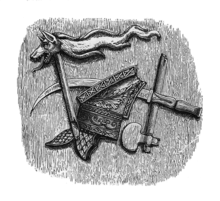 |
| Dacia |
| Geography |
|---|
| Culture |
| History |
| Roman Dacia |
| Legacy |
|
In ancient geography, especially in Roman sources, Dacia (/ˈdeɪʃiə, -ʃə/) was the land inhabited by the Dacians. The Greeks referred to them as the Getae, which were specifically a branch of the Thracians north of the Haemus range.
Dacia was bounded in the south approximately by the Danubius river (Danube), in Greek sources the Istros, or at its greatest extent, by the Haemus Mons (the Balkan Mountains). Moesia (Dobrogea), a region south of the Danube, was a core area where the Getae lived and interacted with the Ancient Greeks. In the east it was bounded by the Pontus Euxinus (Black Sea) and the river Danastris (Dniester), in Greek sources the Tyras. But several Dacian settlements are recorded between the rivers Dniester and Hypanis (Southern Bug), and the Tisia (Tisza) to the west.
At times Dacia included areas between the Tisa and the Middle Danube. The Carpathian Mountains were located in the middle of Dacia. It thus corresponds to the present day countries of Romania and Moldova, as well as smaller parts of Bulgaria, Serbia, Hungary, and Ukraine.
Dacians (or Getae) were North Thracian tribes.[4] Dacian tribes had both peaceful and military encounters with other neighboring tribes, such as Sarmatians, Scythians, and Celts.
A Dacian Kingdom of variable size existed between 82 BC until the Roman conquest in AD 106. The capital of Dacia, Sarmizegetusa, located in modern Romania, was destroyed by the Romans, but its name was added to that of the new city (Ulpia Traiana Sarmizegetusa) built by the latter to serve as the capital of the Roman province of Dacia.
Nomenclature
Classical era
The Dacians are first mentioned in the writings of the Ancient Greeks, in Herodotus (Histories Book IV XCIII: "[Getae] the noblest as well as the most just of all the Thracian tribes") and Thucydides (Peloponnesian Wars, Book II: "[Getae] border on the Scythians and are armed in the same manner, being all mounted archers").[5]
Geography


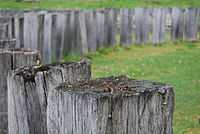
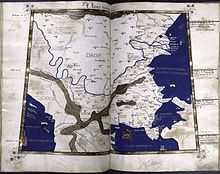
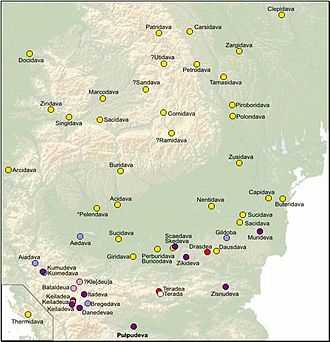
The extent and location of Dacia varied in its three distinct historical periods (see History, below):
Periods
Part of a series on the |
|---|
| History of Romania |
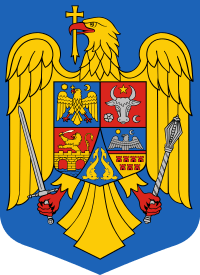 |
|
Post-Revolution |
|
| Romania portal |
Part of a series on the |
|---|
| History of Moldova |
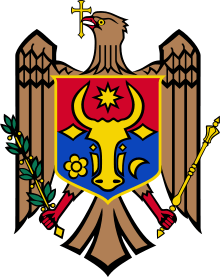 |
| Antiquity |
| Early Middle Ages |
| Principality of Moldavia |
|
| Bessarabia Governorate |
| Moldavian Democratic Republic |
| Greater Romania |
|
| Moldavian ASSR |
| Moldavian SSR |
| Republic of Moldova |
|
| Moldova portal |
1st century BC
The Dacia of King Burebista (82–44 BC), stretched from the Black Sea to the river Tisa and from the Balkan Mountains to Bohemia.[6] During that period, the Geto-Dacians conquered a wider territory and Dacia extended from the Middle Danube to the Black Sea littoral (between Apollonia and Olbia) and from present-day Slovakia's mountains to the Balkan mountains.[7] In 53 BC, Julius Caesar stated that the lands of the Dacians started on the eastern edge of the Hercynian Forest (Black Forest).[8] After Burebista's death, his kingdom split in four states, later five.
Around 20 AD, Strabo wrote Geographica,[9] which delineates the regions inhabited by Dacians at that time. On its basis, Lengyel and Radan (1980), Hoddinott (1981) and Mountain (1998) consider that the Geto-Dacians inhabited both sides of the Tisza river prior to the rise of the Celtic Boii, and again after the latter were defeated by the Dacians.[10][11] The hold of the Dacians between the Danube and Tisza was tenuous.[12] However, the archaeologist Parducz argued a Dacian presence west of the Tisa dating from the time of Burebista.[13] According to Tacitus (AD 56 – AD 117) Dacians bordered Germania in the south-east, while Sarmatians bordered it in the east.[14]
In the 1st century AD, the Iazyges settled West of Dacia, on the plain between the Danube and the Tisa rivers, according to the scholars' interpretation of Pliny's text: “The higher parts between the Danube and the Hercynian Forest (Black Forest) as far as the winter quarters of Pannonia at Carnutum and the plains and level country of the German frontiers there are occupied by the Sarmatian Iazyges, while the Dacians whom they have driven out hold the mountains and forests as far as the river Theiss”.[15][16][17][18]
1st century AD
Strabo, in his Geography written between 20 BC – AD 23, says:[19]
″As for the southern part of Germany beyond the Albis, the portion which is just contiguous to that river is occupied by the Suevi; then immediately adjoining this is the land of the Getae, which, though narrow at first, stretching as it does along the Ister on its southern side and on the opposite side along the mountain-side of the Hercynian Forest (for the land of the Getae also embraces a part of the mountains), afterwards broadens out towards the north as far as the Tyregetae; but I cannot tell the precise boundaries″
Towards the west Dacia may originally have extended as far as the Danube, where it runs from north to south at Vác. In the 1st century BC, at the time of the Dacian Kingdom of Burebista, Julius Caesar in his De Bello Gallico (book 6) speaks of the Hercynian forest extending along the Danube to the territory of the Dacians.
2nd century AD
Written a few decades after the Roman conquest of Dacia in AD 105–106,[20] Ptolemy's Geographia included the boundaries of Dacia. According to the scholars' interpretation of Ptolemy (Hrushevskyi 1997, Bunbury 1879, Mocsy 1974, Barbulescu and Nagler 2005) Dacia was the region between the rivers Tisza, Danube, upper Dniester, and Siret.[21][22] [23][24] Mainstream historians accept this interpretation: Avery (1972) Berenger (1994) Fol (1996) Mountain (1998), Waldman Mason (2006).[25][8][26][27][28]
Ptolemy also provided a couple of Dacian toponyms in south Poland in the Upper Vistula (Polish: Wisla) river basin: Susudava and Setidava (with a manuscript variant Getidava[29]).[30][31][32] This could have been an “echo” of Burebista’s expansion.[30] It seems that this northern expansion of the Dacian language, as far as the Vistula river, lasted until AD 170–180 when the migration of the Vandal Hasdingi pushed out this northern Dacian group.[33][34] This Dacian group, possibly the Costoboci/Lipiţa culture, is associated by Gudmund Schütte with towns having the specific Dacian language ending "dava" i.e. Setidava.[35]
The Roman province Dacia Traiana, established by the victors of the Dacian Wars during AD 101–106, initially comprised only the regions known today as Banat, Oltenia, Transylvania, and was subsequently gradually extended to parts of Moldavia, while Dobruja and Budjak belonged the Roman province of Moesia.
In the 2nd century AD, after the Roman conquest, Ptolemy puts the eastern boundary of Dacia Traiana (the Roman province) as far east as the Hierasus (Siret) river, in modern Romania. Roman rule extended to include the south-western area of the Dacian Kingdom, but not to what later became known as Maramureş), to parts of the later Principality of Moldavia east of the Siret and north of the Upper Trajan Wall, and to areas in modern Muntenia and Ukraine, except the Black Sea shore.
After the Marcomannic Wars (AD 166–180), Dacian groups from outside Roman Dacia had been set in motion. So were the 12,000 Dacians 'from the neighbourhood of Roman Dacia sent away from their own country'. Their native country could have been the Upper Tisa region, but other places cannot be excluded.[36]
The later Roman province Dacia Aureliana, was organized inside former Moesia Superior after the retreat of the Roman army from Dacia, during the reign of emperor Aurelian during AD 271–275. It was reorganised as Dacia Ripensis (as a military province) and Dacia Mediterranea (as a civil province).[37]
Cities
Ptolemy gives a list of 43 names of towns in Dacia, out of which arguably 33 were of Dacian origin. Most of the latter included the added suffix ‘dava’ (meaning settlement, village). But, other Dacian names from his list lack the suffix (e.g. Zarmisegethusa regia = Zermizirga) In addition, nine other names of Dacian origin seem to have been Latinised.[38]
The cities of the Dacians were known as -dava, -deva, -δαυα ("-dawa" or "-dava", Anc. Gk.), -δεβα ("-deva", Byz. Gk.) or -δαβα ("-dava", Byz. Gk.), etc. . There is a list of Dacian davas 1 and, more actual, at SOLTDM:
- In Dacia: Acidava, Argedava, Buridava, Dokidava, Carsidava, Clepidava, Cumidava, Marcodava, Netindava, Patridava, Pelendava, *Perburidava, Petrodaua, Piroboridaua, Rhamidaua, Rusidava, Sacidava, Sangidava, Setidava, Singidava, Tamasidava, Utidava, Zargidava, Ziridava, Sucidava—26 names altogether.
- In Lower Moesia (the present Northern Bulgaria) and Scythia minor (Dobrudja): Aedeba, *Buteridava, *Giridava, Dausadava, Kapidaua, Murideba, Sacidava, Scaidava (Skedeba), Sagadava, Sukidaua (Sucidava)—10 names in total.
- In Upper Moesia (the districts of Nish, Sofia, and partly Kjustendil): Aiadaba, Bregedaba, Danedebai, Desudaba, Itadeba, Kuimedaba, Zisnudeba—seven names in total.
Gil-doba, a village in Thracia, of unknown location.
Thermi-daua, a town in Dalmatia. Probably a Grecized form of *Germidava.
Pulpu-deva, (Phillipopolis) today Plovdiv in Bulgaria.
Political entities
Rubobostes
Geto-Dacians inhabited both sides of the Tisa river prior to the rise of the Celtic Boii and again after the latter were defeated by the Dacians under the king Burebista.[10] It seems likely that the Dacian state arose as an unstable tribal confederacy, which was united only fitfully by charismatic leadership in both military-political and ideological-religious domains.[10] At the beginning of the 2nd century BC, under the rule of Rubobostes, a Dacian king in present-day Transylvania, the Dacians' power in the Carpathian basin increased after they defeated the Celts, who previously held power in the region.
Oroles
A kingdom of Dacia also existed as early as the first half of the 2nd century BC under King Oroles. Conflicts with the Bastarnae and the Romans (112–109 BC, 74 BC), against whom they had assisted the Scordisci and Dardani, greatly weakened the resources of the Dacians.
Burebista
Burebista (Boerebista), a contemporary of Julius Caesar, ruled Geto-Dacian tribes between 82 BC and 44 BC. He thoroughly reorganised the army and attempted to raise the moral standard and obedience of the people by persuading them to cut their vines and give up drinking wine.[39] During his reign, the limits of the Dacian Kingdom were extended to their maximum. The Bastarnae and Boii were conquered, and even the Greek towns of Olbia and Apollonia on the Black Sea (Pontus Euxinus) recognized Burebista's authority. In 53 BC, Caesar stated that the Dacian territory was on the eastern border of the Hercynian Forest.[8]
Burebista suppressed the indigenous minting of coinages by four major tribal groups, adopting imported or copied Roman denarii as a monetary standard[10] During his reign, Burebista transferred Geto-Dacians capital from Argedava to Sarmizegetusa Regia.[40][41] For at least one and a half centuries, Sarmizegetusa was the Dacians' capital and reached its peak under King Decebalus. The Dacians appeared so formidable that Caesar contemplated an expedition against them, which his death in 44 BC prevented. In the same year Burebista was murdered, and the kingdom was divided into four (later five) parts under separate rulers.
Cotiso
One of these entities was Cotiso's state, to whom Augustus betrothed his own five-year-old daughter Julia. He is well known from the line in Horace (Occidit Daci Cotisonis agmen, Odes, III. 8. 18).
The Dacians are often mentioned under Augustus, according to whom they were compelled to recognize Roman supremacy. However they were by no means subdued, and in later times to maintain their independence they seized every opportunity to cross the frozen Danube during the winter and ravaging the Roman cities in the province of Moesia.
Strabo testified: "although the Getae and Daci once attained to very great power, so that they actually could send forth an expedition of two hundred thousand men, they now find themselves reduced to as few as forty thousand, and they have come close to the point of yielding obedience to the Romans, though as yet they are not absolutely submissive, because of the hopes which they base on the Germans, who are enemies to the Romans" [17]
In fact, this occurred because Burebista's empire split after his death into four and later five smaller states, as Strabo explains, "only recently, when Augustus Caesar sent an expedition against them, the number of parts into which the empire had been divided was five, though at the time of the insurrection it had been four. Such divisions, to be sure, are only temporary and vary with the times".
Decebalus
Decebalus ruled the Dacians between AD 87 and 106. The frontiers of Decebal's Dacia were marked by the Tisa River to the west, by the Carpathians to the north and by the Dniester River to the east.[42] His name translates into "strong as ten men".
Roman conquest

Trajan turned his attention to Dacia, an area north of Macedonia and Greece and east of the Danube that had been on the Roman agenda since before the days of Julius Caesar[43][44] when a Roman army had been beaten at the Battle of Histria.[45] In AD 85, the Dacians had swarmed over the Danube and pillaged Moesia[46][47] and initially defeated an army the Emperor Domitian sent against them,[48] but the Romans were victorious in the Battle of Tapae in AD 88 and a truce was drawn up.[48]
From AD 85 to 89, the Dacians under Decebalus were engaged in two wars with the Romans.
In AD 87, the Roman troops under Cornelius Fuscus were defeated, and Cornelius Fuscus was killed by the Dacians by authority of their ruler, Diurpaneus. After this victory, Diurpaneus took the name of Decebalus.[49] The next year, AD 88, new Roman troops under Tettius Iullianus, gained a significant advantage, but were obliged to make peace following the defeat of Domitian by the Marcomanni, leaving the Dacians effectively independent. Decebalus was given the status of "king client to Rome", receiving military instructors, craftsmen and money from Rome.
Emperor Trajan recommenced hostilities against Dacia and, following an uncertain number of battles,[50] and with Trajan's troops pressing towards the Dacian capital Sarmizegethusa, Decebalus once more sought terms.[51] Decebalus rebuilt his power over the following years and attacked Roman garrisons again in AD 105. In response Trajan again marched into Dacia,[52] attacking the Dacian capital in the Siege of Sarmizegethusa, and razing it to the ground;[53] the defeated Dacian general Decebalus committed suicide to avoid capture.[54] With Dacia quelled, Trajan subsequently invaded the Parthian empire to the east. His conquests brought the Roman Empire to its greatest extent. Rome's borders in the east were governed indirectly in this period, through a system of client states, which led to less direct campaigning than in the west.[55]
.svg.png)
To increase the glory of his reign, restore the finances of Rome, and end a treaty perceived as humiliating, Trajan resolved on the conquest of Dacia, the capture of the famous Treasure of Decebalus, and control over the Dacian gold mines of Transylvania. The result of his first campaign (101–102) was the siege of the Dacian capital Sarmizegethusa and the occupation of part of the country. The second campaign (105–106) ended with the suicide of Decebalus, and the conquest of the territory that was to form the Roman province Dacia Traiana.[56] The history of the war is given by Cassius Dio, but the best commentary upon it is the famous Column of Trajan in Rome.
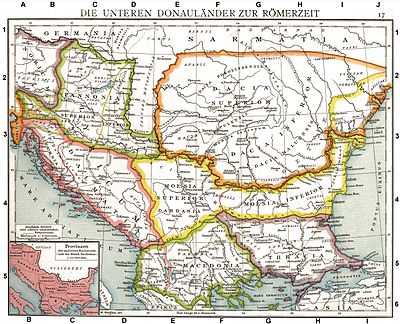
Although the Romans conquered and destroyed the ancient Kingdom of Dacia, a large remainder of the land remained outside of Roman Imperial authority. Additionally, the conquest changed the balance of power in the region and was the catalyst for a renewed alliance of Germanic and Celtic tribes and kingdoms against the Roman Empire. However, the material advantages of the Roman Imperial system was attractive to the surviving aristocracy. Afterwards, many of the Dacians became Romanised (see also Origin of Romanians). In AD 183, war broke out in Dacia: few details are available, but it appears two future contenders for the throne of emperor Commodus, Clodius Albinus and Pescennius Niger, both distinguished themselves in the campaign.
According to Lactantius,[57] the Roman emperor Decius (AD 249–251) had to restore Roman Dacia from the Carpo-Dacians of Zosimus "having undertaken an expedition against the Carpi, who had then possessed themselves of Dacia and Moesia".

Even so, the Germanic and Celtic kingdoms, particularly the Gothic tribes, slowly moved toward the Dacian borders, and within a generation were making assaults on the province. Ultimately, the Goths succeeded in dislodging the Romans and restoring the "independence" of Dacia following Emperor Aurelian's withdrawal, in 275.
In AD 268–269, at Naissus, Claudius II (Gothicus Maximus) obtained a decisive victory over the Goths. Since at that time Romans were still occupying Roman Dacia it is assumed that the Goths didn't cross the Danube from the Roman province. The Goths who survived their defeat didn't even attempt to escape through Dacia, but through Thrace.[58] At the boundaries of Roman Dacia, Carpi (Free Dacians) were still strong enough to sustain five battles in eight years against the Romans from AD 301–308. Roman Dacia was left in AD 275 by the Romans, to the Carpi again, and not to the Goths. There were still Dacians in AD 336, against whom Constantine the Great fought.
The province was abandoned by Roman troops, and, according to the Breviarium historiae Romanae by Eutropius, Roman citizens "from the towns and lands of Dacia" were resettled to the interior of Moesia.[59] Under Diocletian, c. AD 296, in order to defend the Roman border, fortifications were erected by the Romans on both banks of the Danube.[37] By AD 336, Constantine the Great had reconquered the lost province. He took the title Dacicus Maximus ("The great Victor over the Dacians") when he restored Dacia back to the Roman Empire in 336 AD. However, following his death, the Romans abandoned Dacia permanently.
Roman Empire as the Dacian Empire
According to Lactantius, emperor Galerius (c. 260 – April or May 311) affirmed his Dacian identity and avowed himself the enemy of the Roman name once made emperor, even proposing that the empire should be called, not the Roman, but the Dacian Empire, much to the horror of the patricians and senators. He exhibited anti-Roman attitude as soon as he had attained the highest power, treating the Roman citizens with ruthless cruelty, like the conquerors treated the conquered, all in the name of the same treatment that the victorious Trajan had applied to the conquered Dacians, forefathers of Galerius, two centuries before.[60] [61]
Dacia after the Romans
Victohali, Taifals and Thervingians are tribes mentioned for inhabiting Dacia in 350, after the Romans left. Archeological evidence suggests that Gepids were disputing Transylvania with Taifals and Tervingians. Taifals, once independent from Gothia became federati of the Romans, from whom they obtained the right to settle Oltenia.
In 376 the region was conquered by Huns, who kept it until the death of Attila in 453. The Gepid tribe, ruled by Ardaric, used it as their base, until in 566 it was destroyed by Lombards. Lombards abandoned the country and the Avars (second half of the 6th century), dominating the region for 230 years, until their kingdom was destroyed by Charlemagne in 791. At the same time Slavic people arrived peacefully. They were considered lower class and servants and they were permitted to enter and work on the land.
See also
- Dacians
- Dacian warfare
- Falx (weapon)
- List of Dacian kings
- List of Dacian cities
- List of Dacian tribes
- Dacian bracelets
- Dacian Draco
- Dacian language
- Dacian warfare
- Trajan's Column
- Trajan's Bridge
Notes
- ↑ (Romanian) http://www.historia.ro/exclusiv_web/general/articol/intemeiat-burebista-primul-stat-dacic
- ↑ http://www.dacia.co.ro/di.html
- ↑ (Romanian) http://enciclopediaromaniei.ro/wiki/Statul_geto-dac_%C3%AEn_timpul_lui_Burebista
- ↑ Dacian, North Thracian Language
- ↑ J. P. Mallory, Douglas Q. Adams. Encyclopedia of Indo-European culture. London and Chicago: Fitzroy-Dearborn. ISBN 1-884964-98-2. Retrieved 2009-06-20.
- ↑ "History of Romania – Antiquity – The Dacians". Britannica Encyclopedia.
- ↑ Murray 2001, p. 1120.
- ↑ 8.0 8.1 8.2 Mountain & 1998 59.
- ↑ Strabo, Jones & Sterrett 1967, p. 28.
- ↑ 10.0 10.1 10.2 10.3 Taylor 2001, p. 215.
- ↑ Lengyel, Radan & 1980 "No matter where the Boii first settled after they left Italia, however, when they arrived at the Danube they had to fight the Dacians who held the entire territory — or at least part of it. Strabo tells us that later animosity between the Dacians and the Boii stemmed from the fact that the Dacians demanded the land from the latter which the Dacians pretended to have possessed earlier.'", p. 87.
- ↑ Lengyel & Radan 1980, p. 87.
- ↑ Ehrich 1970, p. 228.
- ↑ Gruen 2011, p. 204 : Germany as a whole is separated from the Gauls and from the Raetians and Pannonians by the rivers Rhine and Danube, from the Sarmatians and Dacians by mutual fear or mountains; the ocean surrounds the rest of it.
- ↑ Hrushevskyi 1997, p. 93.
- ↑ Bosworth 1980, p. 60.
- ↑ Carnap-Bornheim 2003, p. 228.
- ↑ Scott Shelley 1997, p. 10.
- ↑ Geography by the Greek historian, geographer and philosopher Strabo (63/64 BC – c. AD 24
- ↑ Mattern 2002, p. 61.
- ↑ Mykhailo Hrushevskyi, 1997 & 97" Dacia, as described by Ptolemy, occupied the region between the Tisa, Danube, upper Dnister, and Seret, while the Black Sea coast — namely, the Greek colonies of Tyras, Olbia, and others — were included in Lower Moesia. ".
- ↑ Bunbury & 1979 517.
- ↑ Mocsy 1974, p. 21.
- ↑ Barbulescu & Nägler 2005, p. 71.
- ↑ Berenger 1994, p. 25.
- ↑ Waldman & Mason 2006, p. 205.
- ↑ Avery 1972, p. 113.
- ↑ Fol 1996, p. 223.
- ↑ Dobiás 1964, p. 70.
- ↑ 30.0 30.1 Berindei & Candea 2001, p. 429.
- ↑ Shutte 1952, p. 270.
- ↑ Giurescu C & Giurescu D 1974, p. 31.
- ↑ Gordon Childe 1930, p. 245.
- ↑ Shutte 1917, p. 143 and p=109.
- ↑ Shutte 952, p. 270.
- ↑ Opreanu 1997, p. 249.
- ↑ 37.0 37.1 Charles Matson Odahl: Constantine and the Christian Empire
- ↑ Oltean 2007, p. 114.
- ↑ Strabo, Geography, VII:3.11
- ↑ MacKendrick 1975, p. 48.
- ↑ Goodman & Sherwood 2002, p. 227.
- ↑ Vico, Pinton & 2001 325.
- ↑ Goldsworthy, In the Name of Rome, p. 322
- ↑ Matyszak, The Enemies of Rome, p. 213
- ↑ Matyszak, The Enemies of Rome, p. 215
- ↑ Matyszak, The Enemies of Rome, p. 216
- ↑ Luttwak, The Grand Strategy of the Roman Empire, p. 53
- ↑ 48.0 48.1 Matyszak, The Enemies of Rome, p. 217
- ↑ "De Imperatoribus Romanis" (ASSORTED IMPERIAL BATTLE DESCRIPTIONS). An Online Encyclopedia of Roman Emperors. Retrieved 2007-11-08.
Battle of Sarmizegetusa (Sarmizegetuza), AD 105. During Trajan's reign Rome achieved victory over the Dacians. The first important confrontation between the Romans and the Dacians took place in the year AD 87 and was initiated by Domitian. The praetorian prefect Cornelius led five or six legions across the Danube on a bridge of ships and advanced towards Banat (in Romania). The Romans were surprised by a Dacian attack at Tapae (near the village of Bucova, in Romania). Legion V Alaude was crushed and Cornelius Fuscus was killed. The victorious general was originally known as Diurpaneus (see Manea, p.109), but after this victory he was called Decebalus (the brave one).
- ↑ Matyszak, The Enemies of Rome, p. 219
- ↑ Goldsworthy, In the Name of Rome, p. 329
- ↑ Matyszak, The Enemies of Rome, p. 222
- ↑ Matyszak, The Enemies of Rome, p. 223
- ↑ Luttwak, The Grand Strategy of the Roman Empire, p. 54
- ↑ Luttwak, The Grand Strategy of the Roman Empire, p. 39
- ↑ Stoica, Vasile (1919). The Roumanian Question: The Roumanians and their Lands. Pittsburgh: Pittsburgh Printing Company. p. 52.
- ↑ “Of the Manner in which the persecutors died” by Lactantius (early Christian author AD 240–320)
- ↑ Battle of Naissus and Cladius Gothicus. Beside Zosimuss account there is also Historia Augusta, The Life of Claudius.
- ↑ http://www.ccel.org/p/pearse/morefathers/eutropius_breviarium_2_text.htm
- ↑ Lactantius, Venantius Honorius Clementianus Fortunatus (1871). "26". In Roberts, Alexander. The Works of Lactantius: A treatise on the anger of God 2. Edinburgh: T & T Clack. p. 190. Retrieved 2012-04-15.
And thus did he, once a Roman emperor, but now the ravager of Italy, retire into his own territories, after having afflicted all men indiscriminately with the calamities of war. Long ago, indeed, and at the very time of his obtaining sovereign power, he had avowed himself the enemy of the Roman name; and he proposed that the empire should be called, not the Roman, but the Dacian empire.
- ↑ Lactantius, De Mortibus Persecutorum, CHAP. XXIII: But that which gave rise to public and universal calamity, was the tax imposed at once on each province and city. Surveyors having been spread abroad, and occupied in a general and severe scrutiny, horrible scenes were exhibited, like the outrages of victorious enemies, and the wretched state of captives. Each spot of ground was measured, vines and fruit-trees numbered, lists taken of animals of every kind, and a capi- tation-roll made up. In cities, the common people, whether residing within or without the walls, were assembled, the market-places filled with crowds of families, all attended with their children and slaves, the noise of torture and scourges resounded, sons were hung on the rack to force discovery of the effects of their fathers, the most trusty slaves compelled by pain to bear witness against their masters, and wives to bear witness against their husbands, In default of all other evidence, men were tortured to speak against themselves; and no sooner did agony oblige them to acknowledge what they had not, but those imaginary effects were noted down in the lists. Neither youth, nor old age, nor sickness, afforded any exemption. The diseased and the infirm were carried in; the age of each was estimated; and, that the capitation -tax might be enlarged, years were added to the young and struck off from the old. General lamentation and sorrow prevailed. Whatever, by the laws of war, conquerors had done to the conquered, the like did this man presume to perpetrate against Romans and the subjects of Rome, because his forefathers had been made liable to a like tax imposed by the victorious Trajan, as a penalty on the Dacians for their frequent rebellions. After this, money was levied for each head, as if a price had been paid for liberty to exist; yet full trust was not reposed on the same set of surveyors, but others and others still were sent round to make further discoveries; and thus the tributes were redoubled, not because the new surveyors made any fresh discoveries, but because they added at pleasure to the former rates, lest they should seem to have been employed to no purpose. Meanwhile the number of animals decreased, and men died; nevertheless taxes were paid even for the dead, so that no one could either live or cease to live without being subject to impositions. There remained mendicants alone, from whom nothing could be exacted, and whom their misery and wretchedness secured from ill- treatment. But this pious man had compassion on them, and determining that they should remain no longer in indigence, he caused them all to be assembled, put on board vessels, and sunk in the sea. So merciful was he in making provision that under his administration no man should want! And thus, while he took effectual measures that none, under the reigned pretext of poverty, should elude the tax, he put to death a multitude of real wretches, in violation of every law of humanity. [...] So the parts of Italy through which that pestilent band took its course were wasted, all things pillaged, matrons forced, virgins violated, parents and husbands compelled by torture to disclose where they had concealed their goods, and their wives and daughters; flocks and herds of cattle were driven off like spoils taken from barbarians. And thus did he, once a Roman emperor, but now the ravager of Italy, retire into his own territories, after having afflicted all men indiscriminately with the calamities of war. Long ago, indeed, and at the very time of his obtaining sovereign power, he had avowed himself the enemy of the Roman name; and he proposed that the empire should be called, not the Roman, but the Dacian empire.
References
- Kai Brodersen: Könige im Karpatenbogen. In: Zeitschrift für Siebenbürgische Landeskunde 36 (2013) pp. 129–146 (ISSN 0344-3418) [on the pre-Roman kings of Dacia]
- Heather, Peter (2010). Empires and Barbarians: Migration, Development, and the Birth of Europe. Oxford University Press. ISBN 978-0-19-973560-0.
- Hoddinott, Ralph F., The Thracians, 1981.
- Hrushevskyi, Mykhailo (1997). History of Ukraine-Rus'. Canadian Institute of Ukrainian Studies Press. ISBN 978-1-895571-19-6.
- Mocsy, Andras (1974). Pannonia and Upper Moesia: History of the Middle Danube Provinces of the Roman Empire. Routledge & Kegan Paul Books. ISBN 978-0-7100-7714-1.
- Mountain, Harry (1998). The Celtic Encyclopedia. Universal Publishers. ISBN 978-1-58112-890-1.
- Murray, Tim (2001). Encyclopedia of archaeology: Volume 1, Part 1. ABC-Clio; illustrated edition. ISBN 978-1-57607-198-4.
- Taylor, Timothy (2001). Northeastern European Iron Age pages 210–221 and East Central European Iron Age pages 79–90’'. Springer Published in conjunction with the Human Relations Area Files. ISBN 978-0-306-46258-0.
- Vico, Giambattista; Pinton, Giorgio A. (2004). Statecraft: The Deeds of Antonio Carafa . Peter Lang Pub Inc. ISBN 978-0-8204-6828-0.
- Waldman, Carl; Mason, Catherine (2006). Encyclopedia of European Peoples, 2-Volume Set. Facts on File. ISBN 978-0-8160-4964-6.
External links
| Wikimedia Commons has media related to: |
| Wikimedia Commons has media related to Maps of Dacia. |
- Sorin Olteanu's Thraco-Daco-Moesian Languages Project (SoLTDM) (sources, thesaurus, textual criticism, phonetics and morphology, substratum, historical geography a.o.)
- Dacia – The historic region in East-Central Europe (includes Roman Castra)
- Ptolemy's Geography, book III, chapter 5
- UNRV Dacia article
- sights.seindal.dk – Dacians as they appear on the Arch of Constantine
- www.fectio.org.uk – Draco Late Roman military standard
- www.stoa.org/trajan – Dacian Wars on Trajan's Column
- Journey to the Land of the Cloud Rovers – photographic slide show of Sarmizegetusa.
- Dacian history
- Dacia on coins.
- Dacian coins
| Preceded by Prehistory of the Balkans |
History of Romania | Succeeded by Roman Dacia |
| ||||||||||||||||||||||||||||||||||||||||||||||||||||||||||||||||||||||||||
| ||||||||||||||||||||||||||||||||||||||||||
|